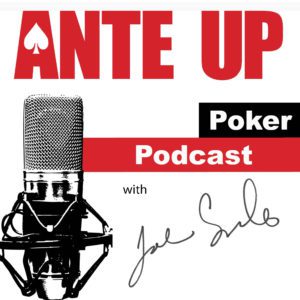Skill wins hands, but bankroll management wins careers. Even the best players lose. Without a plan, one bad run can wipe everything. Good bankroll rules like the ones at TonyBet keep you playing long enough to win with skill.
Going Beyond the Basics
Beginners often hear this: keep 20 buy-ins for cash games and 50 for tournaments. This works at the entry level. But advanced players know it’s not enough. Variance, risk tolerance, and game type demand a more flexible system. What works for a $1/$2 cash grinder won’t fit a pro playing high-variance tournaments.
Understanding Variance in Poker
Variance is the natural swing of wins and losses. A player can make all the right moves yet still lose for weeks. Bankroll planning must account for these swings.
A few key truths about variance:
- Short-term results often mislead.
- Downswings are inevitable, even for great players.
- The higher the variance, the bigger the bankroll needed.
Ignoring variance is like ignoring gravity. Sooner or later, it pulls you down.
Risk Assessment Models for Players
Advanced bankroll management uses structured models to measure risk. The Kelly Criterion is a formula that shows how much to bet based on your advantage. While rarely followed strictly in poker, it shows how players can scale risk according to advantage.
Another model is the risk of ruin analysis. This estimates the chance of going broke given win rate, variance, and bankroll size. Professional players often run simulations to see how safe their current bankroll is under different game types.
Adjusting for Game Type
Cash games, tournaments, and sit-and-gos each need their own bankroll rules.
Cash games: Lower variance, so fewer buy-ins needed. But players must prepare for deep downswings if they play against stronger fields.
Tournaments: Extremely high variance. Even world-class players can go months without a big score. Here, bankrolls of 100+ buy-ins are common.
Sit-and-gos: Somewhere in between. Risk levels depend on payout structure and field size.
Understanding the math behind each format helps avoid emotional decisions.
Tailoring Strategy to Skill Level
A beginner with a small edge needs more protection. They should keep larger bankroll cushions to handle variance. An expert with a strong long-term win rate can take more aggressive shots at higher stakes. This scaling creates balance:
- New players focus on survival.
- Skilled players leverage edges with controlled aggression.
Elite players sometimes “take shots,” but always with backup funds.
Dynamic Bankroll Management
Static rules like “30 buy-ins minimum” are too rigid. Dynamic bankroll management changes with circumstances. For example:
- During a heater, a player may risk moving up stakes with part of their winnings.
- During a downswing, they can drop down to rebuild confidence and funds.
- If skill edge improves, they adjust risk upward.
This approach requires discipline. Without honesty about results and skill, it turns into reckless chasing.
Psychological Safety Nets
Bankroll management isn’t only about numbers. It protects the mind. A player who knows their bankroll can handle losses stays calmer at the table. Tilt is less likely when survival feels secure.
Some pros even keep separate “life roll” and “poker roll” accounts. This way, a bad run at the tables never affects rent money or bills. That separation keeps decisions logical rather than emotional.
Advanced Concepts: Stop-Loss and Win Goals
Some players use stop-loss rules, such as leaving the session after losing three buy-ins. This prevents tilt-driven bankroll damage. Others set win goals, stopping once they reach a set profit for the day.
While debated in the poker world, these tools can reinforce discipline. They act as checkpoints rather than strict financial rules. The key is sticking to them and not bending when emotions rise.
Bankroll Segmentation
Another advanced technique is segmentation. Instead of one large bankroll, players divide funds into separate pools:
- One for cash games.
- One for tournaments.
- One for “shots” at higher stakes.
Segmentation reduces risk. If one format goes badly, it doesn’t wipe out everything. It also gives players freedom to experiment with new games while protecting their main grind.
Tracking and Reviewing Data
Good bankroll management relies on accurate data. Tracking software shows win rates, variance, and downswings. Reviewing results helps adjust bankroll strategies in real time.
Without tracking, decisions rely on “gut feeling,” which is often wrong. With tracking, bankroll rules can be refined with hard numbers.
The Role of Risk Tolerance
Not every player has the same comfort level. Some can stomach aggressive bankroll rules, others prefer safer cushions. An advanced bankroll strategy respects personal tolerance.
Two players with the same skill might keep very different bankrolls:
- One keeps 30 buy-ins for tournaments, willing to risk big swings.
- The other holds 150, choosing security over rapid growth.
Neither is wrong. Both reflect personal comfort with risk.




